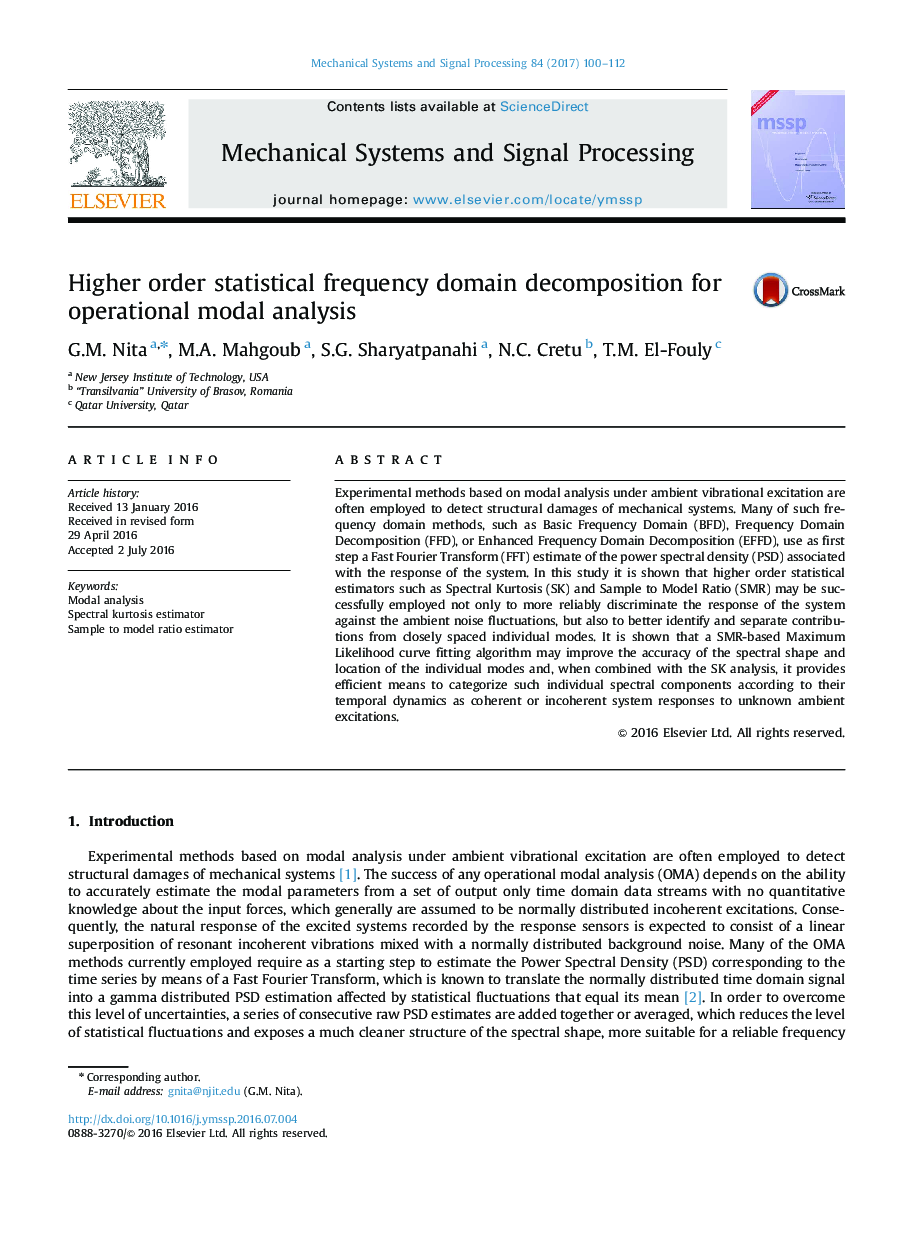| Article ID | Journal | Published Year | Pages | File Type |
|---|---|---|---|---|
| 10368714 | Mechanical Systems and Signal Processing | 2017 | 13 Pages |
Abstract
Experimental methods based on modal analysis under ambient vibrational excitation are often employed to detect structural damages of mechanical systems. Many of such frequency domain methods, such as Basic Frequency Domain (BFD), Frequency Domain Decomposition (FFD), or Enhanced Frequency Domain Decomposition (EFFD), use as first step a Fast Fourier Transform (FFT) estimate of the power spectral density (PSD) associated with the response of the system. In this study it is shown that higher order statistical estimators such as Spectral Kurtosis (SK) and Sample to Model Ratio (SMR) may be successfully employed not only to more reliably discriminate the response of the system against the ambient noise fluctuations, but also to better identify and separate contributions from closely spaced individual modes. It is shown that a SMR-based Maximum Likelihood curve fitting algorithm may improve the accuracy of the spectral shape and location of the individual modes and, when combined with the SK analysis, it provides efficient means to categorize such individual spectral components according to their temporal dynamics as coherent or incoherent system responses to unknown ambient excitations.
Keywords
Related Topics
Physical Sciences and Engineering
Computer Science
Signal Processing
Authors
G.M. Nita, M.A. Mahgoub, S.G. Sharyatpanahi, N.C. Cretu, T.M. El-Fouly,
